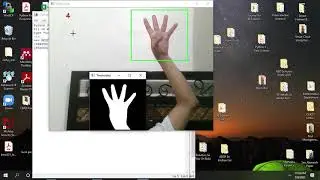Disk dropped on a rotating disk angular momentum conservation problem (rotational collision).
In this classic angular momentum conservation problem, we drop a disk on a rotating disk and calculate the final angular velocity of the combined disks, then the rotational kinetic energy lost in the rotational collision.
For the disk dropped on a rotating disk problem, we are given the initial angular velocity of a large rotating disk. A second disk is dropped onto the larger disk and the two disks come to a common final angular velocity in a "rotational collision".
Our first goal is to find the final angular velocity of the two disks, and for this we use conservation of angular momentum Li=Lf. We sub in the initial moment of inertia and initial angular velocity, the final moment of inertia and final angular velocity, and we solve for the final angular speed. Plugging in the numbers, we find the final angular speed in rotations per minute, but we go ahead with a conversion to radians per second, because we're going to need it in the next part of the problem.
Our second goal is to find the rotational kinetic energy lost in the collision, and we still have to get the initial angular velocity in SI units of radians per second, so we do that conversion first. Now we can compute the initial rotational kinetic energy as 1/2*I_i*omega_i^2 and the final rotational kinetic energy as 1/2*I_f*omega_f^2 . We find the reduction in rotational kinetic energy for the rotating disk angular momentum conservation problem, and we're done!







